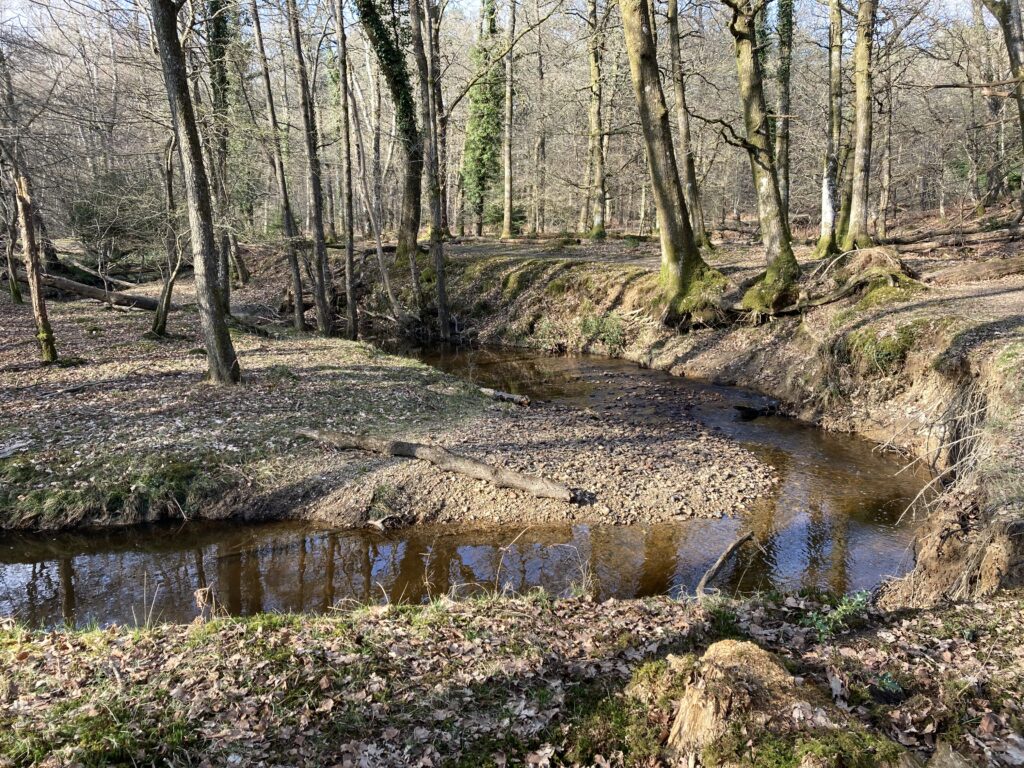MoRPh Rivers was originally developed to complement biological surveys, especially the Riverfly citizen science survey. However, it is now used for a wide variety of applications where detailed physical habitat monitoring is needed. Following its initial development, MoRPh rivers was established in 2016-2017 through a project led by Professor Angela Gurnell and funded by Queen Mary University of London with contributions from the Environment Agency and Cartographer. Since 2017, MoRPh Rivers has been funded and further developed by Cartographer with recent support during 2024-2025 from CaSTCo.
MoRPh Rivers captures detailed records of river physical habitats and generates a set of assessment indicators for short lengths of river at a spatial scale compatible with biological and water quality monitoring.
The survey records sediments, physical habitats, vegetation structure and human pressures and interventions across the bank tops, bank faces and bed of short river lengths called modules. MoRPh surveys should be undertaken during low flows to ensure good visibility of the recorded features. In addition to perennially-flowing rivers, the survey can be applied to seasonally wetted or temporary headwater streams. It is ideal for monitoring the detailed form and functioning of rivers and streams and how these change in response to natural processes or human interventions.

Tools
MoRPh provides two tools for assessing rivers:
Individual MoRPh modules
When a survey of a single MoRPh module is uploaded into the MoRPh data base, 14 numerical indicators are extracted and can be mapped, graphed and downloaded along with the raw data. Maps of individual indicators illustrate changes in the physical character of rivers along river reaches whereas graphs for a single location illustrate changes through time.
MoRPh10 surveys
A sequence of 10 adjacent (joined) MoRPh surveys provides a more comprehensive audit of habitats over a river subreach of 100 to 400m in length. When a MoRPh10 survey is uploaded into the MoRPh data base, 16 integrative indicators are computed and can be mapped.
History
The MoRPh rivers survey was developed in 2016 to provide a physical habitat survey at an appropriate scale to accompany biological monitoring so that habitat and biota could be monitored at the same time and spatial scale.
Since 2015, the survey has been used to capture detailed physical habitat information to characterise river condition, to identify opportunities for river restoration, and to track changes through time, whether in response to changing natural flow and sediment transport processes or to human interventions, especially river restoration measures.
From 2018, the survey was incorporated into a River Condition Assessment methodology, which forms part of Defra’s Biodiversity Metric.
As part of the Thames Water Smarter Water Catchments programme, MoRPh is currently being used as part of a multi-scale assessment of the river network of the River Crane catchment in west London. Here citizen scientists and river professionals are working to understand the river network and to introduce and monitor sustainable river restorations across this Thames Water Smarter Water Catchment.

Modular River Survey training courses, including Citizen Science courses, are run by Cartographer Studios under their Training Terms.

